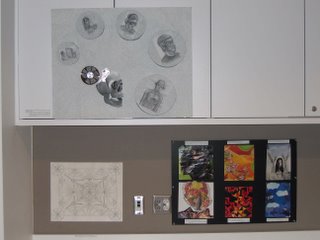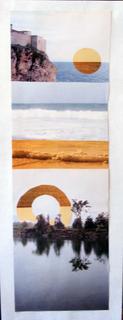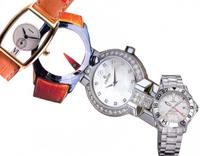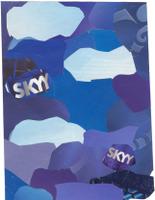| FINAL PROJECT Here is a link to our final project exhibit: FINAL EXHIBIT OF STUDENT PROJECTS Here are some pictures of my work:   I had lots of fun in this class and its surely was very different from my previous courses (Since I come from a Computer Science background). |
FINAL PROJECT PROPOSAL INTRODUCTION For my final project I was asked to extend the previous interface exercise to a final production. Based on this interface exercise, the in-class work, the critique with Therese and discussion, I have to propose a final production (a series of images, one large image, image and text etc...) to further explore the themes discussed. I have to use three works observed in Musée d'art contemporain (in any medium) that I feel will influence my final project. This will be part of my "research" component for this project. PROJECT DESCRIPTION 1. Imagine a human/computer interface of the future (five to ten years into the future at least). (a) What do we WANT from machines? Why do we build machines? (b) How can machines empower/disempowered us? How do we create utopias/dystopias? (c) A critical approach to the words POWER, ACCESS, CONTROL, MEMORY 2. Take a very abstract and conceptual approach to the word "interface". The interface can either be very specific (a toaster of the future) or very general (a scenario for how humans and computers can co-exist, in a more or less symbiotic relationships). 3. Illustrate this interface with sequential images, anywhere from two to ten. Use a mixture of drawing, painting, collage, and digital (if you want). 4. You can use either (a) narrative storytelling or (b) a juxtaposition of abstract images to create a MOOD or FEELING (think of the film 2001). 5. You can either create: (a) A linear narrative scenario or storyboard (like a comic book). (b) A sequence of images of a single object from different angles, at different times, or at different scales, with different amounts of detail. For example, you can use cinematographic techniques such as pan, zoom (think of the exercise you did with Therese on representing things at different scales). (c) An abstract sequence of images that tell a story by association (think of the jump cut of the shots of the sheep and the men coming out of the subway in Modern Times). PROJECT DETAIL I will try to represent using several sequential images on how computers are slowly taking over our lives. Goals and Objectives Representation 1) Use of materials taken from computer hardware in order to represent the computerized aspect of my interface. 2) Use of objects such as video cameras, microphones, speakers to represent how computers are slowly taking over reality by artificially representing our world with images and sound and manipulating the way we see and feel about the things that surround us. 3) 3D is a good way to show the evolution of digital graphics and audio. It is probably where the future human/computer interface is getting to. Goal 1) What do we WANT from machines? Why do we build machines? Answer: Machines are built to facilitate our daily work. They help us speed up the way we do things. They help us memorize by recording things and visualize them later on. 2) How can machines empower/disempowered us? How do we create utopias/dystopias? Answer: They are slowly taking over our lives by representing our reality virtually. They are making decision for us and also creating visual/auditory illusions that affect the way we believe and see things. Machines are using more and more energy while we are using less and less energy. As we go further into the future, we are slowly being eliminated by our own creations. 3) A critical approach to the words POWER, ACCESS, CONTROL, MEMORY Power: • Power to survive using machinery • Power to increase our knowledge • Power to protect us Access: • Access huge amount of data • Access several options (diversification) • Access tools for daily usage Control • Control our needs • Control our energy • Control our minds Memory • Help us remember things • Conserve our history • Develop our knowledge |
Musée d'art contemporain While visiting the Musée d'art contemporain de Montréal (MAC) I was surprised on how some works look similar to one another and how others were so different. For example they was a work done by artist Sylvia Safdie called Earth Marks where she used natural materials to paint an image (linseed oil and soil on translucent polyester film). It was paintings shaped in the form of a human, it looked like someone was burnt and the trace of their corpse stayed printed on the ground. A very detailed work that really caught my eye was Michael Merill’s Studio Table 2 (done in 2003). The detail was remarkable. He represented a 3D room filled with different objects. The thing that was interesting about this work is that he drawn the whole thing in a transparent way so that we can see through each object and yet still manage to see it as a 3D image. The material used for this work make it very simple (graphite sur papier) but the details of the drawing itself makes it very complex. Another very different concept was the work of Christian Kiopini a piece where he represents an image by layering several levels of some sort of cardboard to make a 3D illusion. He also paints on top of it several different shapes. This work is very interesting since it represents a 3D view in 2 different ways. From up close, we see the 3D representation created by the layers of cardboard. From far, the shapes painted become 3D making this work a 2 type 3D illusion. The musee was split into 2 sections, one on the left and the other on the right. One side had paintings and sculptures from various artists while the other side seemed to me more digital media oriented. There was a dark room with 4 projectors in it. Each projector pointed to one of the 4 walls in the room. All 4 projectors were showing a Parking lot lamp (the same lamp since all lamps had the same lot number on them) shown from 4 different angles. It seemed like a live shots from some security cameras. By being in the room, we had a feeling of being in the parking lot since all the images projected were covering the full walls and the ambience of the room made it look very realistic (dark and silent). A section was dedicated to photographic images of different people (several pictures of the same person, each represented on a different wall). The people in these photos showed emotions based on who they were and how their lives evolved. As you looked at these pictures you would want to find out more about these people, thus an article written about them was attached beside these photos. Lastly, I went into a room where several different projectors were placed on the floor and attached to a disassembled web camera (the camera was taken out of its plastic cover so that we don’t know what it is). Each projector showed live images taken from the web camera. Some projectors were also attached to a motion sensor which played with the image depending on the actions made by the people around it. Very interesting concept I find. Based on this visit and the artistic work that I had the privilege to discover, I decided that my final project should represent a metaphoric observation of a futuristic human/computer interface. Just like Sylvia Safdie, I want to use different materials taken from computer parts to represent my interface. I’ll use the concept behind Alexandre Castonguay’s work to show how objects such as projectors, digital cameras, and other new gadgetry are taken part of the way we see things. I believe Alexandre Castonguay wants to show us how machines are influencing the way we see things and also the way we feel about things. I also want to use 3D perspective just like some of the artist I mentioned did. |

















